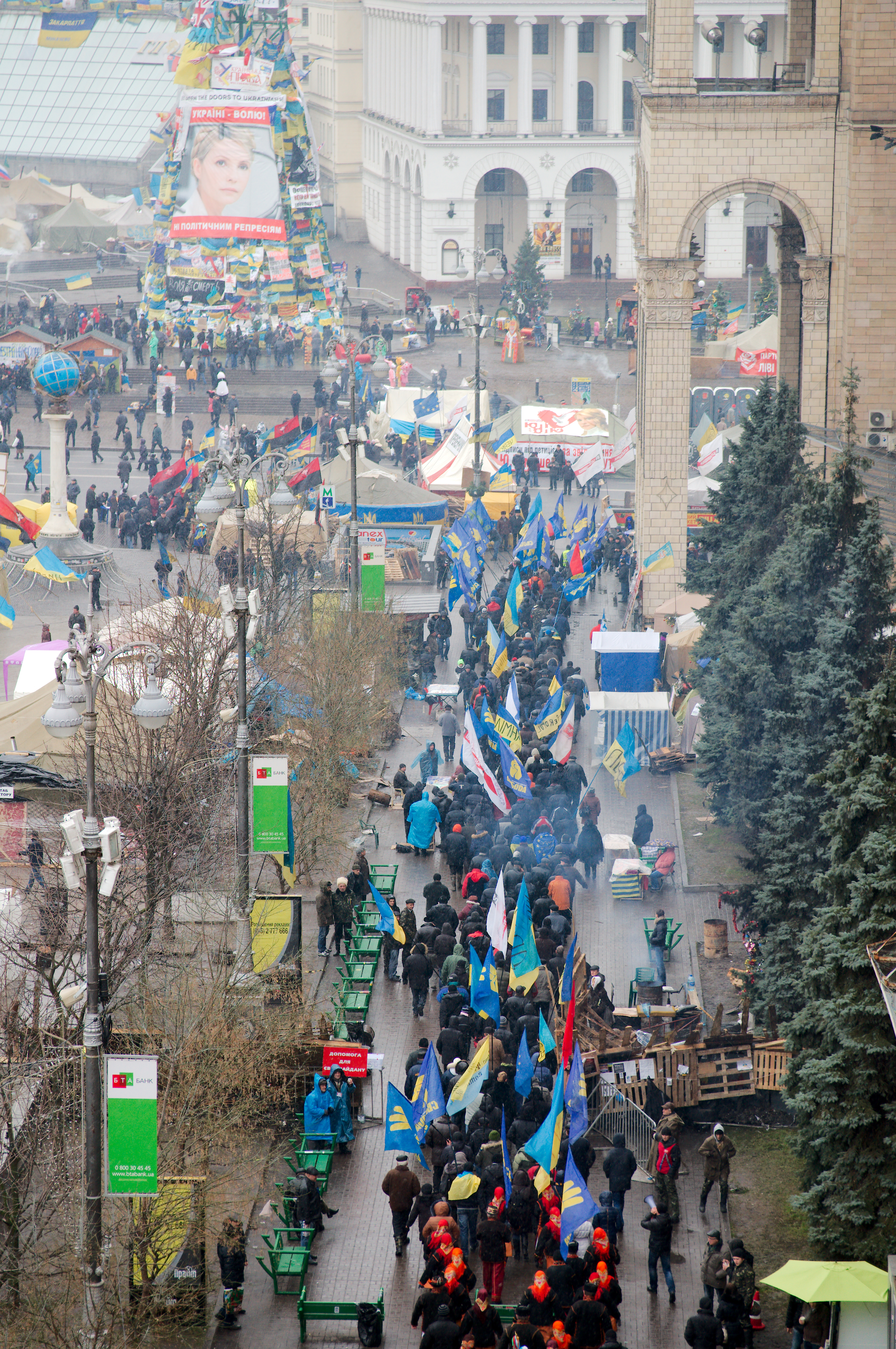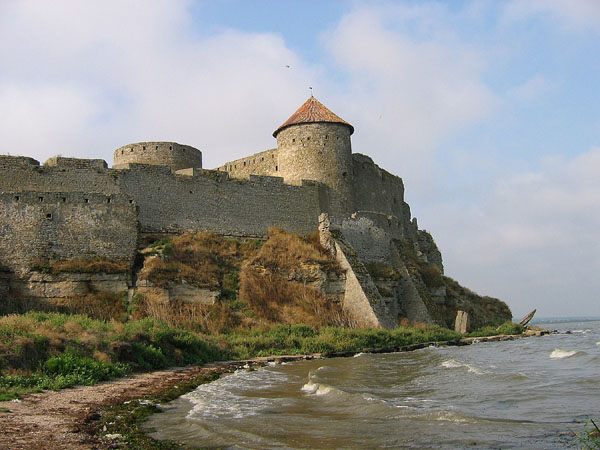|
National Council Of Bessarabia
The National Council of Bessarabia was a separatist organisation was headed by Dmitriy Zatuliveter, of the previously obscure Organization of Transnistrians in Ukraine. It arose in 2014, following the Russian military intervention in Ukraine. Overview The group released a manifesto on a Russian-registered website in which it decried "discrimination" against ethnic minorities in the region, and called for far greater autonomy in the Budjak region even while nominally rejecting separatism. Ukrainian authorities took swift action, with the SBU making two dozen arrests. This led one Ukrainian site to claim that the movement had been "smothered in its cradle". Party of Regions and Bulgarian minority leader in the Budjak, Anton Kisse, have been denying any connection to the movement and even rejected it. There have been some speculation that the organisation sought to ultimately create a "Bessarabian People's Republic" and link with separatists in Moldova's Gagauzia and Transnistria. ... [...More Info...] [...Related Items...] OR: [Wikipedia] [Google] [Baidu] |
Bessarabia
Bessarabia (; Gagauz: ''Besarabiya''; Romanian: ''Basarabia''; Ukrainian: ''Бессара́бія'') is a historical region in Eastern Europe, bounded by the Dniester river on the east and the Prut river on the west. About two thirds of Bessarabia lies within modern-day Moldova, with the Ukrainian Budjak region covering the southern coastal region and part of the Ukrainian Chernivtsi Oblast covering a small area in the north. In the aftermath of the Russo-Turkish War (1806–1812), and the ensuing Peace of Bucharest, the eastern parts of the Principality of Moldavia, an Ottoman vassal, along with some areas formerly under direct Ottoman rule, were ceded to Imperial Russia. The acquisition was among the Empire's last territorial acquisitions in Europe. The newly acquired territories were organised as the Bessarabia Governorate of the Russian Empire, adopting a name previously used for the southern plains between the Dniester and the Danube rivers. Following the Crimean War ... [...More Info...] [...Related Items...] OR: [Wikipedia] [Google] [Baidu] |
Donetsk People's Republic
The Donetsk People's Republic ( rus, Донецкая Народная Республика, Donetskaya Narodnaya Respublika, dɐˈnʲetskəjə nɐˈrodnəjə rʲɪˈspublʲɪkə; abbreviated as DPR or DNR, rus, ДНР) is a Territorial dispute, disputed entity created by Russian people's militias in Ukraine, Russian-backed separatists in eastern Ukraine, which claims Donetsk Oblast. It began as a Secession, breakaway state (2014–2022) and was then Annexation, annexed by Russia in 2022. The city of Donetsk is the claimed capital city. 2014 pro-Russian unrest in Ukraine, Pro-Russian unrest erupted in the Donbas region in response to the Ukrainian Revolution of Dignity. In April 2014, armed pro-Russian separatists seized government buildings and declared the Donetsk People's Republic (DPR) and Luhansk People's Republic (LPR) as sovereign state, independent states, which received no International recognition of the Donetsk People's Republic and the Luhansk People's Republi ... [...More Info...] [...Related Items...] OR: [Wikipedia] [Google] [Baidu] |
2014 Pro-Russian Unrest In Ukraine
From the end of February 2014, demonstrations by pro-Russian and anti-government groups took place in major cities across the Eastern Ukraine, eastern and Southern Ukraine, southern regions of Ukraine in the aftermath of the Revolution of Dignity, which resulted in the success of Euromaidan in ousting then-President of Ukraine, President Viktor Yanukovych. The unrest, supported by Russia in the midst of the Russo-Ukrainian War, has been referred to in Russia as the "Russian Spring" (russian: Русская весна, translit=Russkaya vesna, uk, Російська весна, translit=Rosiiska vesna). During its first phase in February–March 2014, the Ukrainian territory of Crimea was Russo-Ukrainian War#Russian annexation of Crimea (2014), invaded and subsequently Annexation of Crimea by the Russian Federation, annexed by Russia following an internationally unrecognized 2014 Crimean status referendum, referendum, with the United Nations General Assembly United Nations Gen ... [...More Info...] [...Related Items...] OR: [Wikipedia] [Google] [Baidu] |
History Of Odesa Oblast
Odesa Oblast ( uk, Оде́ська о́бласть, translit=Odeska oblast), also referred to as Odeshchyna ( uk, Оде́щина) is an oblast (province) of southwestern Ukraine, located along the northern coast of the Black Sea. Its administrative centre is the city of Odesa ( uk, Одеса). Population: The length of coastline (sea-coast and estuaries) reaches , while the state border stretches for .Tell about Ukraine. Odessa Oblast 24 Kanal (youtube). The region has eight seaports, over of s, and five of the biggest lakes in Ukraine. One of the largest, |
Novorossiya (confederation)
Novorossiya or New Russia (russian: Новороссия, ; uk, Новоросія, Novorosiia, ovoroˈsijɐ, also referred to as the Union of People's Republics ( rus, Союз народных республик, Soyuz narodnykh respublik, sɐˈjuz nɐˈroːdnɨx rʲɪˈspublʲɪk; uk, Союз народних республік, translit=Soiuz narodnykh respublik, oˈjuz nɐˈrodnɪx resˈpublik was a confederation of the self-proclaimed Donetsk People's Republic (DPR) and the Luhansk People's Republic (LPR) in Eastern Ukraine, both of which are under the control of pro-Russian separatists. The concept of "Novorossiya" emerged in public discourse along with the beginning of conflict in east Ukraine. Referring to the historic Novorossiya, a former imperial Russian territory conquered from the Cossacks and the Ottomans in which Russian settlers were encouraged to settle, Russia promoted this new Russia concept as a new identity for the Ukrainian breakaway republics o ... [...More Info...] [...Related Items...] OR: [Wikipedia] [Google] [Baidu] |
2014 Pro-Russian Conflict In Ukraine
From the end of February 2014, demonstrations by pro-Russian and anti-government groups took place in major cities across the eastern and southern regions of Ukraine in the aftermath of the Revolution of Dignity, which resulted in the success of Euromaidan in ousting then-President Viktor Yanukovych. The unrest, supported by Russia in the midst of the Russo-Ukrainian War, has been referred to in Russia as the "Russian Spring" (russian: Русская весна, translit=Russkaya vesna, uk, Російська весна, translit=Rosiiska vesna). During its first phase in February–March 2014, the Ukrainian territory of Crimea was invaded and subsequently annexed by Russia following an internationally unrecognized referendum, with the United Nations General Assembly voting in favor of Ukraine's territorial integrity. Concurrently, protests by anti-Maidan and pro-Russian groups took place across other parts of eastern and southern Ukraine. Local separatists, some directed ... [...More Info...] [...Related Items...] OR: [Wikipedia] [Google] [Baidu] |
Luhansk Status Referendum, 2014
Referendums on the status of Donetsk Oblast, Donetsk and Luhansk Oblast, Luhansk Oblasts of Ukraine, oblasts, parts of Ukraine that together make up the Donbas region, were claimed to have taken place on 11 May 2014 in many towns under the control of the Russian-controlled Donetsk People's Republic, Donetsk and Luhansk People's Republic, Luhansk People's Republics. These referendums intended to legitimise the establishment of the so-called "republics", in the context of the Annexation of Crimea by the Russian Federation, Russian invasion of Crimea and 2014 pro-Russian unrest in Ukraine, rising pro-Russian unrest in the aftermath of the Revolution of Dignity, 2014 Ukrainian Revolution. In addition, a counter-referendum on accession to Dnipropetrovsk Oblast was held in some Ukrainian-controlled parts of Donetsk and Luhansk oblasts. The results of the separatist referendums were not officially recognised by any government, including those of First Yatsenyuk Government, Ukraine, th ... [...More Info...] [...Related Items...] OR: [Wikipedia] [Google] [Baidu] |
Republic Of Stakhanov
The Republic of Stakhanov was a proposed separatist republic of Pavel Dryomov on the territory of the city of Stakhanov within the separatist Luhansk People's Republic. Before the war Dryomov was a bricklayer in Stakhanov. At the beginning of the conflict in Eastern Ukraine, Dryomov offered Stakhanov citizens an alternate vision to that of the LPR - a new, socialist neo-Soviet, "Cossack" republic "that works for the poor and elderly". In 2014 Dryomov was called the "savior of Stakhanov" by the British journalist Oliver Carroll who wrote an article about him in Politico magazine. According to Carroll, one of the main points of departure between The Republic of Stakhanov and the Luhansk People's Republic was whether to adhere to the Minsk Protocol ceasefire deal with Ukraine. Dryomov advocated continuing the War in Donbas. During a speech, he advocated his views and stated "We've had enough corruption and slavery here for a century! We're not fools—neither Poroshenko nor Put ... [...More Info...] [...Related Items...] OR: [Wikipedia] [Google] [Baidu] |
Luhansk People's Republic
The Luhansk or Lugansk People's Republic (russian: Луга́нская Наро́дная Респу́блика, Luganskaya Narodnaya Respublika, ; abbreviated as LPR or LNR, rus, ЛНР) is a disputed entity created by Russian-backed separatists in eastern Ukraine, which claims Luhansk Oblast. It began as a breakaway state (2014–2022) and was then annexed by Russia in 2022. The city of Luhansk is the claimed capital city. Pro-Russian unrest erupted in the Donbas region in response to the Ukrainian Revolution of Dignity. In April 2014, armed pro-Russian separatists seized government buildings and declared the Luhansk People's Republic (LPR) and Donetsk People's Republic (DPR) as independent states, which received no international recognition prior to 2022. Ukraine and others viewed them as Russian puppet states and as terrorist organisations. This sparked the War in Donbas, part of the wider Russo-Ukrainian War which also saw the Russian occupation and annexatio ... [...More Info...] [...Related Items...] OR: [Wikipedia] [Google] [Baidu] |
Russian Military Intervention In Ukraine (2014–present)
The Russo-Ukrainian War; uk, російсько-українська війна, rosiisko-ukrainska viina. has been ongoing between Russia (alongside Russian separatists in Ukraine) and Ukraine since February 2014. Following Ukraine's Revolution of Dignity, Russia annexed Crimea from Ukraine and supported pro-Russian separatists in the war in Donbas against Ukrainian government forces; fighting for the first eight years of the conflict also included naval incidents, cyberwarfare, and heightened political tensions. In February 2022, the conflict saw a major escalation as Russia launched a full-scale invasion of Ukraine. In early 2014, pro-Russian Ukrainian president Viktor Yanukovych was ousted from office as a result of the pro-European Euromaidan and the Revolution of Dignity. Shortly after Yanukovych's overthrow and exile to Russia, pro-Russian unrest erupted in Ukraine's eastern and southern regions. Simultaneously, unmarked Russian troops moved into Ukraine's Crim ... [...More Info...] [...Related Items...] OR: [Wikipedia] [Google] [Baidu] |
Transnistria
Transnistria, officially the Pridnestrovian Moldavian Republic (PMR), is an unrecognised breakaway state that is internationally recognised as a part of Moldova. Transnistria controls most of the narrow strip of land between the Dniester river and the Moldovan–Ukrainian border, as well as some land on the other side of the river's bank. Its capital and largest city is Tiraspol. Transnistria has been recognised only by three other unrecognised or partially recognised breakaway states: Abkhazia, Artsakh and South Ossetia. Transnistria is officially designated by the Republic of Moldova as the Administrative-Territorial Units of the Left Bank of the Dniester ( ro, Unitățile Administrativ-Teritoriale din stînga Nistrului) or as ("Left Bank of the Dniester"). The Council of Europe considers the territory to be under military occupation by Russia. The region's origins can be traced to the Moldavian Autonomous Soviet Socialist Republic, which was formed in 1924 within th ... [...More Info...] [...Related Items...] OR: [Wikipedia] [Google] [Baidu] |
Gagauzia
Gagauzia or Gagauz-Yeri, or ; ro, Găgăuzia; russian: Гагаузия, Gagauziya officially the Autonomous Territorial Unit of Gagauzia; ro, Unitatea Teritorială Autonomă Găgăuzia, ''UTAG''; russian: Автономное территориальное образование Гагаузия, Avtonomnoye territoriaľnoye obrazovaniye Gagauziya, АТОГ (ATUG), is an autonomous territorial unit of Moldova. Its autonomy is ethnically motivated by the predominance in the region of the Gagauz people, who are primarily Orthodox Turkic-speaking people. At the end of World War I, all of the territory of Gagauzia became part of the Kingdom of Romania, before being carved up into the Soviet Union in June 1940. From 1941 to 1944 it was again part of Romania, after which it was incorporated into the Moldavian Soviet Socialist Republic. As the Soviet Union began to disintegrate, Gagauzia declared independence in 1990 as the Gagauz Republic, but was integrated into Moldova in 1994. ... [...More Info...] [...Related Items...] OR: [Wikipedia] [Google] [Baidu] |




